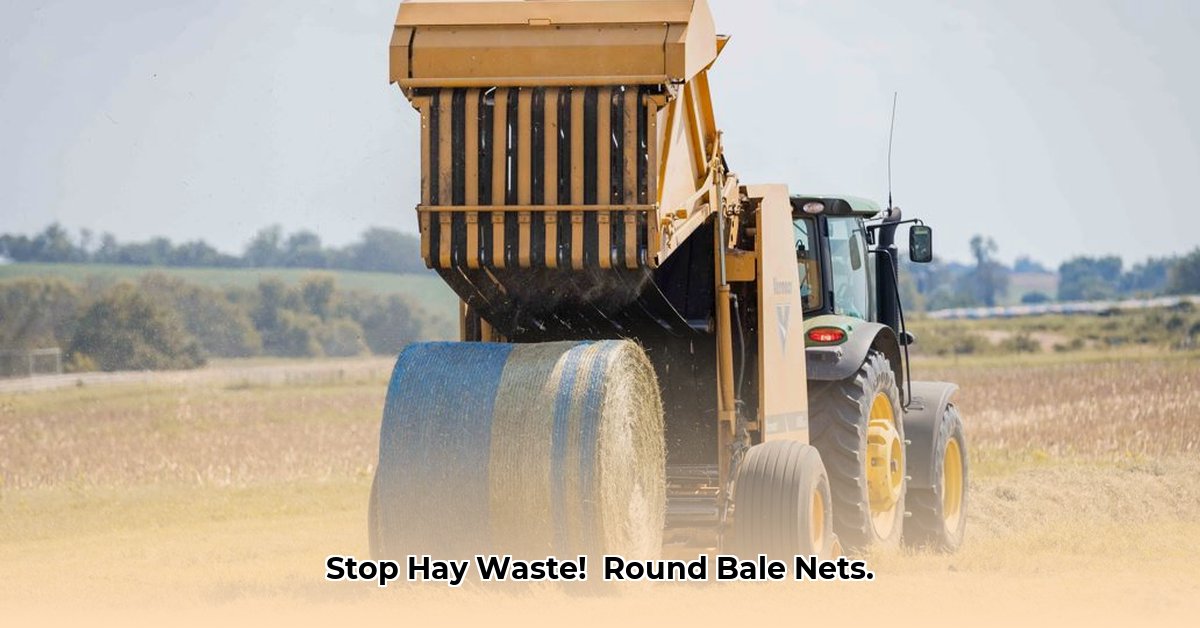
Round Bale Hay Nets: A Comprehensive Guide for Enhanced Farm Efficiency
Tired of wasted hay and inefficient feeding practices? Round bale hay nets, readily available at Tractor Supply, offer a practical solution to enhance farm efficiency, reduce waste, and boost your bottom line. This guide provides a step-by-step approach to selecting, installing, and effectively managing round bale hay nets, optimizing their use for economic and environmental sustainability. For alternative feeding solutions, check out these raised planters.
Selecting the Right Round Bale Hay Net
Choosing the appropriate round bale hay net is crucial for maximizing its benefits. Tractor Supply offers a variety of nets, each with specific features to consider:
Size and Compatibility
Ensure the net's dimensions accurately match your round hay bales. A poorly sized net leads to either wasted hay (too large) or damage to the net or bale (too small). Accurate measurement before purchase is essential.
Material Durability and Longevity
Opt for durable, UV-resistant materials to extend the net's lifespan. Look for information about estimated lifespan from the manufacturer. Consider nets made from recycled materials to align with sustainable farming practices. What's the anticipated lifespan of these high-quality nets, and how does that compare to cheaper alternatives?
Mesh Size and Animal Feeding Habits
Mesh size directly impacts feeding speed. Finer mesh slows down consumption, which can benefit animals prone to overeating or those with specific dietary needs. Larger mesh allows for faster consumption. Consider your animals’ feeding patterns and adjust accordingly.
Setting Up Your Round Bale Hay Net: A Step-by-Step Guide
Proper installation ensures safety and maximizes hay net effectiveness. Follow these steps meticulously:
Preparation: Ensure the bale is stable and on level ground. Inspect the net for any manufacturing defects.
Positioning: Carefully place the net around the bale, ensuring a snug fit.
Securing: Use supplied straps or ropes to firmly secure the net to the bale. Double-check all fastenings.
Final Inspection: Thoroughly inspect the setup for loose areas or potential escape routes for your animals before introducing them.
Optimizing Hay Management with Round Bale Nets
Effective hay management maximizes the benefits of using round bale nets.
Bale Size and Net Capacity
Employ appropriately sized bales to prevent overfilling and ensure consistent hay access for your livestock. Avoid overcrowding the net, as this promotes hay waste.
Strategic Net Placement
Position the nets in easily accessible locations, away from obstacles and adverse weather conditions. Easy access minimizes stress and encourages efficient feeding.
Consumption Monitoring and Adjustment
Regularly monitor the animals’ consumption patterns. Observe feeding rates and remaining hay quantities. This enables timely adjustments to meet your livestock’s needs and promptly identify potential problems. How much hay is typically wasted with traditional methods, and what percentage reduction can you anticipate with haynets?
Cost-Benefit Analysis: Assessing Your Return on Investment (ROI)
The long-term financial impact of using round bale hay nets depends on careful evaluation:
Initial Costs: Include the purchase price of the nets, delivery fees, and installation materials.
Ongoing Costs: Factor in replacement costs (determined by net lifespan and material durability), potential repairs, and any additional labor incurred.
Savings: Accurately track hay waste reduction compared to traditional methods. Quantify savings based on reduced hay consumption and labor time.
Calculating the ROI requires meticulous record-keeping. Track hay usage, waste, net lifespan, and labor costs. This allows for precise assessment of the long-term financial advantages. What's the typical break-even point for the initial investment, considering average hay prices and waste reduction?
Environmental Considerations: Sustainable Farming Practices
The environmental impact of using round bale hay nets is significant:
Reduced Waste: Less wasted hay means less pressure on land resources.
Sustainable Materials: Prioritize nets made from recycled or biodegradable materials to minimize your ecological footprint during manufacturing and disposal. How do you minimize the environmental impact associated with transportation and disposal of these nets?
Troubleshooting and Maintenance
Proactive maintenance prevents costly problems:
Net Damage Prevention: Regularly inspect nets for damage and repair promptly.
Animal Escape Prevention: Ensure proper securing and adjust as necessary to prevent livestock from accessing hay inefficiently.
Addressing Uneven Consumption: Monitor animals' feeding behavior and adjust net placement or the number of nets to ensure equitable access.
Conclusion
Round bale hay nets from Tractor Supply present a valuable strategy for improving farm efficiency and sustainability. By carefully assessing your needs, implementing proper installation and management techniques, and actively monitoring performance, you can realize substantial cost savings and minimize environmental impact. Remember that the effectiveness of this approach relies on tailored strategies that align with your specific farm conditions.